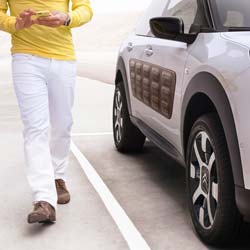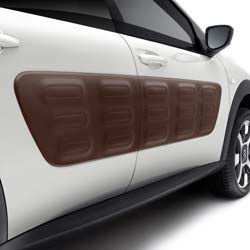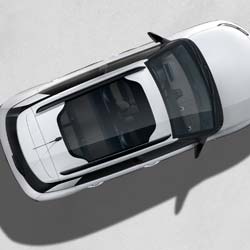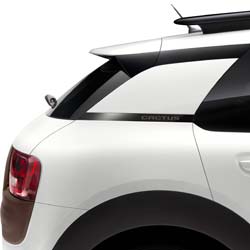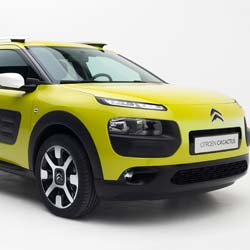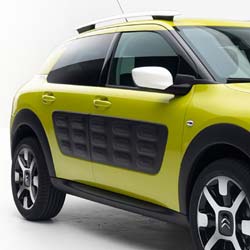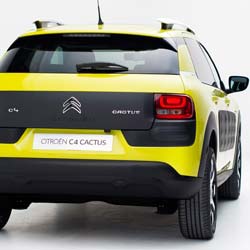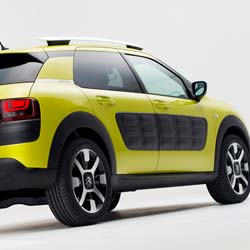Here’s a first: at the recent launch of the new Citroen C4 Cactus, the roof rails were the subject of about five minutes intensive discussion before the driver’s door was even opened.

Who ever took any interest in roof rails – the lavatory-brush holders of car design? Many owners could keep a car for years without ever giving a second’s thought to the roof rails, so long as they didn’t fall off (especially if there was a coffin attached, as sometimes happens).
Following William Morris’s principle that you should “have nothing… that you do not know to be useful, or believe to be beautiful”, however, Citroen’s designers (led by Briton Mark Lloyd, who designed the DS3) have knocked themselves out over the roof rails for the Cactus. Looking like hi-tech skis with a spear-head attached, they are a combination of light metals and plastic composites. Citroen earnestly assure us that these tributes to high art are as functional as they are stylish; but it would seem like a philistine barbarity to disrupt their aesthetic lines by attaching a bicycle or even skis.
As go the roof rails, so goes the Cactus. No car has ever been the focus of more exhaustive design effort to ensure that every element should be fashionable. Going to work every day with the Cactus team at Mark Lloyd’s studios must have been as angst-laden as being in the script-writing squad for The Simpsons: you’d be terrified of suggesting an idea lest the others fell off their chairs laughing at you for being hackneyed or square.
Take, for example, the Airbump panels on the flanks of the Cactus. Many other run-of-the-mill family hatchbacks have been dolled up in the past with reinforced sills and wheel-arches to make them look tough enough to traverse Mato Grosso in Brazil when, in reality, they could barely wade a puddle in a station car-park. While it may have the raised suspension required by such fashion, the low-roofed Cactus eschews sham with its Airbumps. Those bubblewrap panels do give this car a brawny presence which may be questionable for its authenticity; but their main function is to protect the body from nicks and dings in car-parks and such like places where people thrown open their own car doors without checking to see how much space is between themselves and the next car. The thermoplastic polyurethane skin over the air capsules should spring back unharmed under any impact lighter than striking it with a hammer and chisel.
If you get bored with the Airbump panels you have chosen for your Cactus – or if you would like to freshen up the car before putting it on the second-hand market – you can have them replaced in another colour.

Such stylish innovation teems through the Cactus – much of it intended to save weight. The optional glass roof doesn’t have a sliding shade (which might add six kilos) but, instead, is made out such advanced heat and light reflecting glass that it offers protection from the sun’s rays equal to category 4 sunglasses. Instead of being fitted with solid handles inside, the doors pull closed on stiffened fabric straps. The screen washers stream water along the wiper blades rather than hosing the glass. They thus require a smaller reservoir which means the car is carrying less heavy water. The rear windows are pop-outs rather than wind-ups, saving 11 kilos. To save a further six kilos, the rear seats are a continuous bench, instead of being split – though it may be reasonable to speculate that, with that decision, Citroen might have been as interested in saving money as weight. And a similar doubt attaches to the platform on which this car is built – a modified version of the C3 platform rather than the new EMP2 platform on which the new C4 Picasso is built.
Citroen say, again, that weight-saving was the decisive factor in the choice of the Cactus’s platform and even invoke the name of Lotus’s legendary genius Colin Chapman whose mantra was “subtracting weight makes you faster everywhere”. To hear this, anybody would think Citroen were talking about a super-lightweight like the Ariel Atom or Caterham 7. So it comes as a bit of a let-down to find that the Cactus is no less ordinary to drive than its rivals in the style-over-substance market like Renault’s Captur and Nissan’s Juke. The 1600cc BlueHDi100 common-rail diesel in the test car at launch makes a lot of clonky racket while doing little to justify the fuss and the six-speed manual gearbox had a throw so long across the gate that it almost gives you time for a little snooze between gears. In theory, all that weight-saving ought to result in the spectacular fuel efficiency that Citroen claim at 83.1 mpg. In fact, the test car was returning a far less stunning 45.5 mpg. Ride, steering and handling are no better than average. Rear seat legroom is so tight that I couldn’t sit behind myself if the driver’s seat were adjusted for my six-feet frame; and the load space under the rear hatch is shallow under a high sill.
Where the Cactus does score over its rivals, however, is in the ebullient trendiness of its interior. You wouldn’t find anything closer to the cutting edge of fashion on the streets of Shoreditch. The steering-wheel is, of course, ellipsoidal rather than boringly round. Two shiny black screens replace conventional displays. A seven-inch touchscreen controls all the main vehicle functions (including the air conditioning, media, navigation, vehicle settings, telephone, connectivity & driving aids) while a digital screen replaces the conventional instrument cluster. The front passenger airbag is positioned in the ceiling, above the visor, instead of being placed in the dashboard. This move allows for a glove compartment on the passenger side that is big enough to carry the gauntlets of a knight in armour.
[/vc_column][/vc_row][vc_row padding_top=”30px” padding_bottom=”40px” border=”none” inner_container=”true” no_margin=”true” bg_color=”#e8e44d”][vc_column width=”1/1″ fade=”true” fade_animation=”in-from-top” fade_animation_offset=”100px”]
Share the New Citroen C4 Cactus

